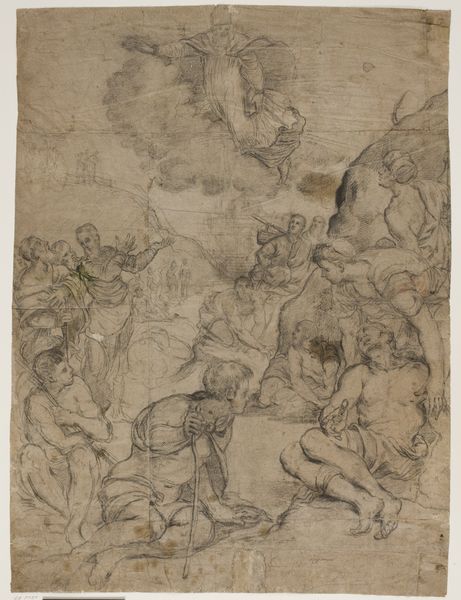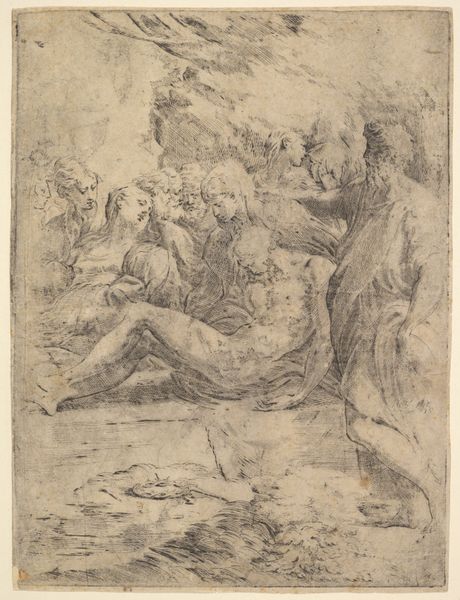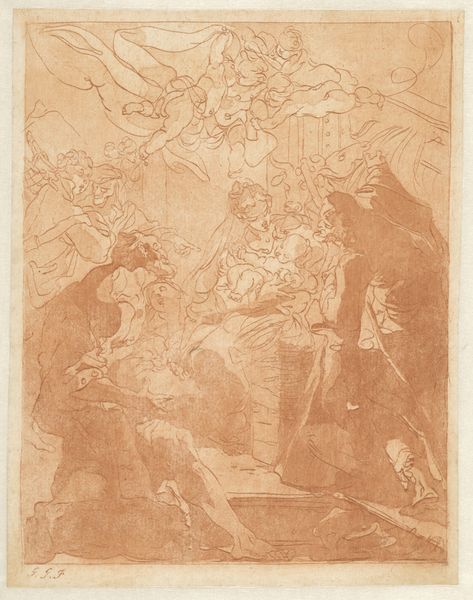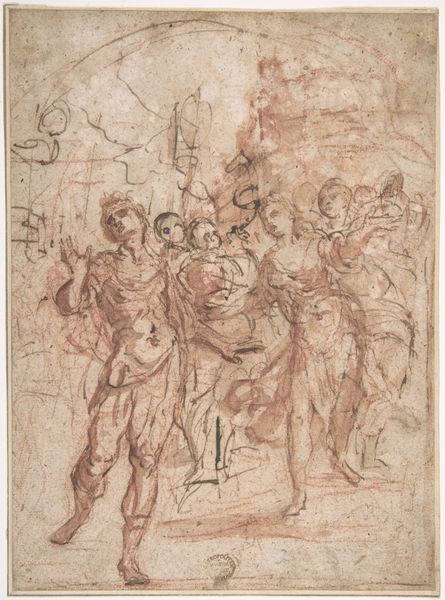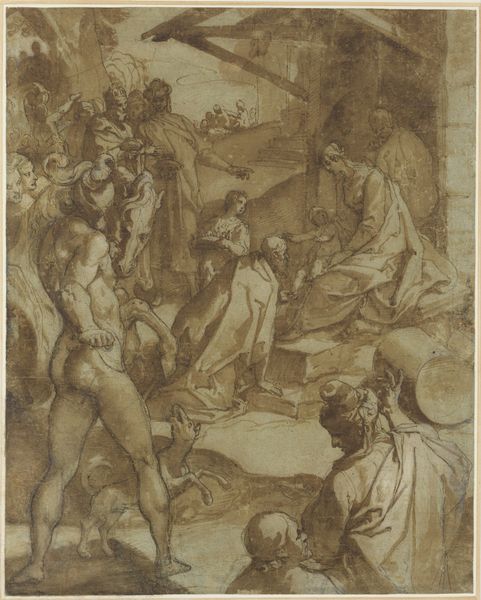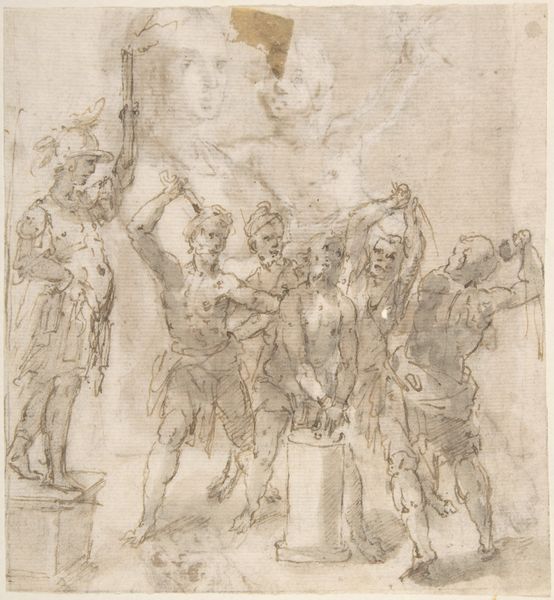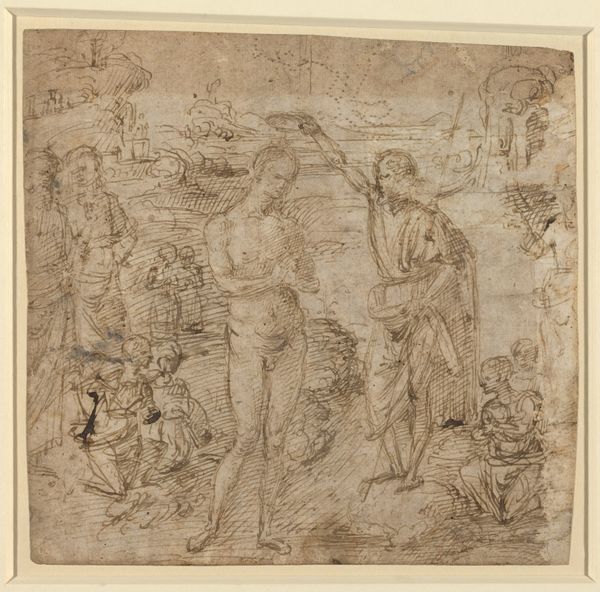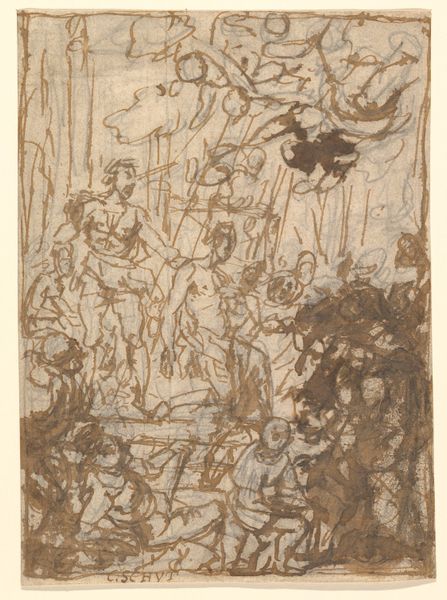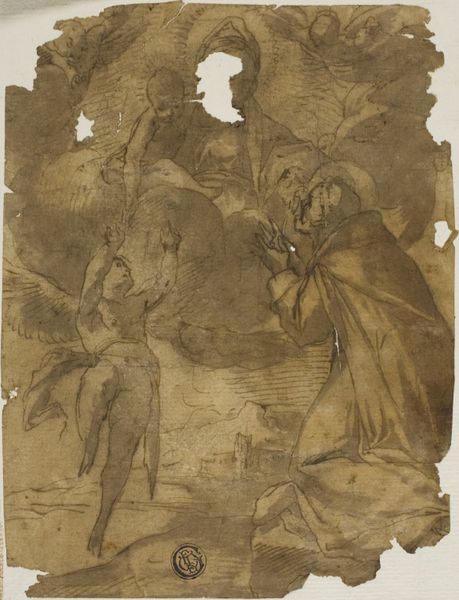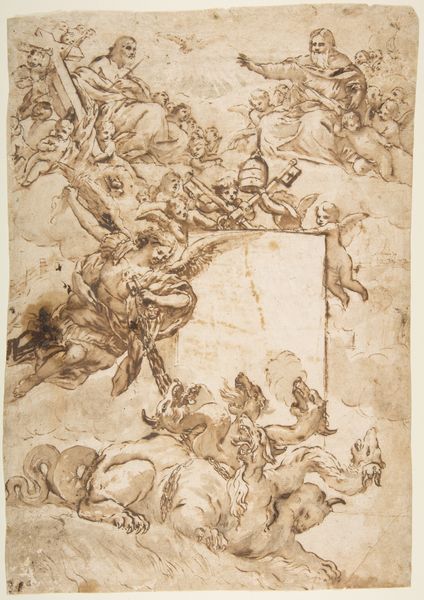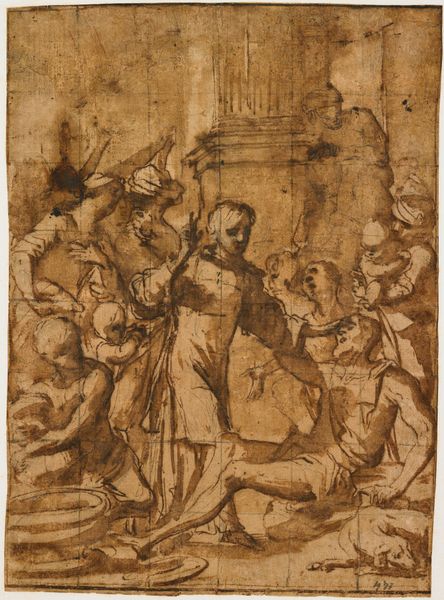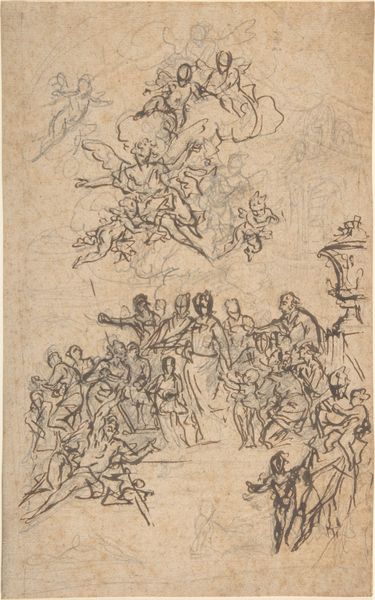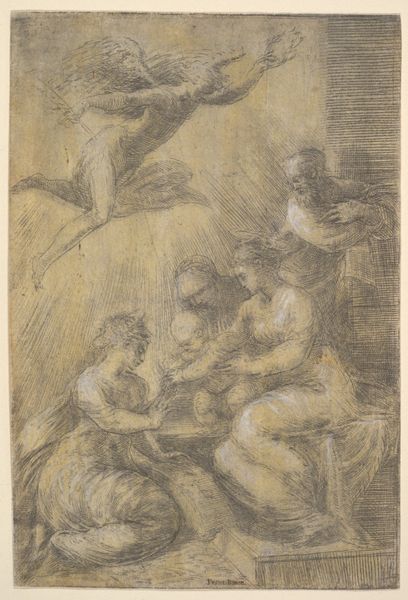
En gruppe hyrder, i deres midte en ung hyrde, der fortællende peger mod himlen. Josef imellem sine brødre? 1637 - 1724
0:00
0:00
drawing, paper, ink, pen
#
drawing
#
narrative-art
#
baroque
#
ink painting
#
figuration
#
paper
#
ink
#
pen
#
genre-painting
Dimensions: 255 mm (height) x 211 mm (width) (bladmaal)
Curator: At first glance, I'm struck by the monochromatic earthiness of this drawing. It evokes a kind of humble simplicity. Editor: Indeed. We're looking at a pen and ink drawing on paper, attributed to Sigismondo Caula, dating somewhere between 1637 and 1724. The museum has titled it "En gruppe hyrder, i deres midte en ung hyrde, der fort\u00e6llende peger mod himlen. Josef imellem sine br\u00f8dre?". Curator: The texture of the paper itself seems integral to the piece. The ink bleeds slightly, giving it this aged, almost worn feeling. Was paper readily available, or would that have influenced the work’s value? Editor: Paper was becoming increasingly available, facilitating a broader artistic output and aiding in dissemination of artistic ideas. Note the suggested narrative within the work, prompting conversations and interpretations among viewers. Caula was active in the social context of artistic and religious patronage. This theme nods to storytelling in public life at the time. Curator: Absolutely, there’s an intentional ambiguity here. What narrative is this image enacting and how might we better engage the viewer? I see such expressive hand gestures; pointing fingers directing us upward. Editor: These images are designed for public viewing in places of importance, to convey some version of the truth or encourage shared interpretations that bolster particular ideology. The materiality – the very portability of paper for preparatory studies like these suggests the growing accessibility and exchange of images. It's housed at the SMK – Statens Museum for Kunst. Its presence there highlights how art collections preserve, classify and make meaning through acts of public consumption. Curator: It's fascinating how such simple materials - ink, pen, paper - can convey such depth. Considering how its very making speaks to how and for whom such narratives were deployed underscores just how embedded materiality and meaning are here. Editor: A worthy reminder, I think, of how considering art's creation impacts reception—a dialogue shaped both by its means and the societal moment in which it was received.
Comments
No comments
Be the first to comment and join the conversation on the ultimate creative platform.
